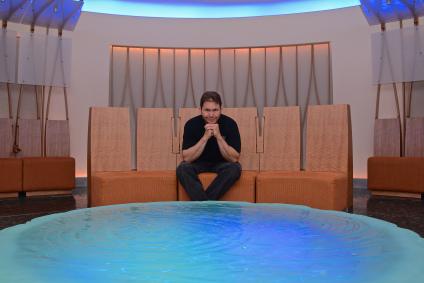
Internationally recognized for its novel approaches to treating leukemia, lymphoma and multiple myeloma, the Duke Cancer Institutes’s Adult Bone Marrow Transplant (ABMT) Program celebrates its 30th anniversary in June 2015. The program, which performs about 300 transplants annually, is expected to have administered its 5,000th transplant by the end of June.
“Our program was the first in the nation to begin outpatient stem cell transplantation,” said Nelson Chao, MD, MBA, professor of medicine and chief for the Division of Hematologic Malignancies and Cellular Therapy. “We were also one of the first to develop cord blood transplantations for adults.”
Gerald Maldren was just 29 and newly married when in 1997 he was diagnosed with chronic myelogenous blast crisis leukemia.
An amateur body builder and admittedly somewhat concerned about his appearance, Madren’s turbulent journey to health and wellness would test and refine his outlook on life, even as gold is polished and perfected by fire.
“When I was first diagnosed my doctors said it would probably take five to 10 years for my leukemia to become full-blown,” remembered Madren. “But within a year I was pretty sick – bruised from head to toe and jaundice, I was admitted to Duke Medical Center only a few months after my diagnosis.”
Chronic myelogenous leukemia is an uncommon type of cancer of the blood cells. The cancer tends to progress more slowly than acute forms of leukemia. Chronic myelogenous leukemia typically affects older adults; however, in Madren’s case it hit early and spread rapidly. Symptoms may include spontaneous bleeding and bruising, fatigue, fever, pale skin and night sweats.
With a combination of chemotherapy and blood and platelet transfusions, Madren’s cell therapy and hematologic malignancies specialists were able to put his cancer into remission. However, it wasn’t long before Madren, an off-set printing pressman, was back in the hospital as he coped with his cancer and the effects of his treatment.
“I was getting blood and platelets daily,” he said. “I had no immune system, and I weighed just 110 pounds. Looks were important to me. But I couldn’t workout anymore. And once I lost the weight, there wasn’t much I could do. Everything was out of my control.”
To help put his cancer in remission for good, Madren would need an umbilical cord blood stem cell transplant. Stem cell transplants can replace stem cells that are killed or damaged by the higher doses of chemotherapy needed to treat some aggressive cancers. These transplants allow oncologists to use much higher doses of chemo to eliminate cancer cells.
Madren, who lives in Thomasville, N.C., spent the better part of a year in the hospital. However, after his stem cell transplant and many months patiently waiting for his immune system to be restored, things began to take a turn for the better. Now, 18 years later, Madren remains cancer free.
“I’m so thankful for my doctors and nurses,” said Madren, as he un-successfully tried to hold back a very determined tear. “I’m here by design. God gave my doctors the talent and skill to save me. Having cancer has changed my perspective. Before I got sick I didn’t think things through and I didn’t think of others as much as I worried about what they thought of me. That’s all different now. God’s first. Others come second. And I’m third.”
Looking to the future, Chao said the division will work to reduce complications from graft versus host disease, a common complication following a stem cell or bone marrow transplant.
“Over the next few years we will also work to increase access for patients in need of transplantation,” Chao added. “Decreasing morbidity, or incidences of disease, is also a primary objective for the ABMT Program.”
Read the full post by Duke Cancer Institute and learn more about the ABMT Program.